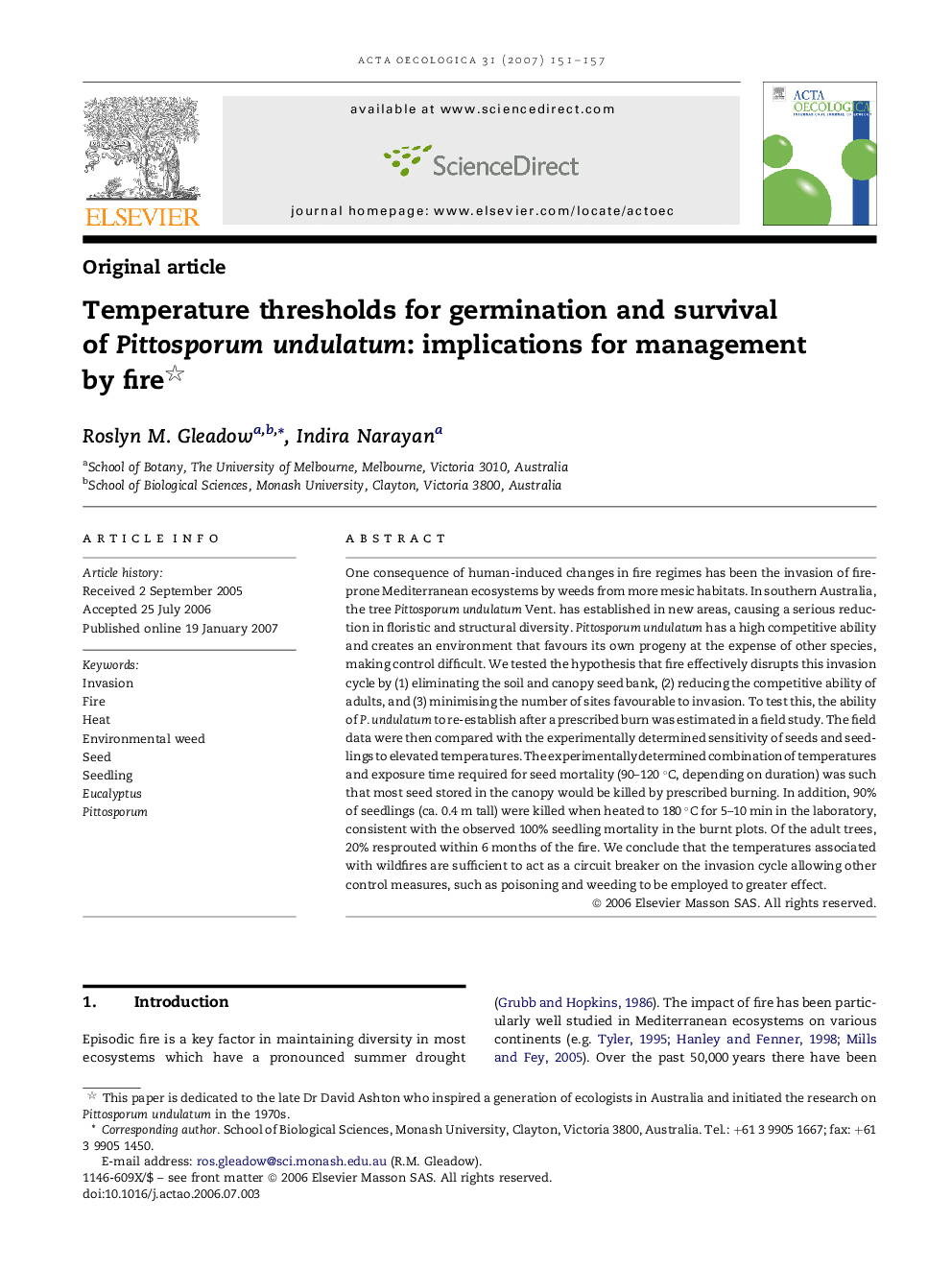| Article ID | Journal | Published Year | Pages | File Type |
|---|---|---|---|---|
| 4381584 | Acta Oecologica | 2007 | 7 Pages |
ABSTRACTOne consequence of human-induced changes in fire regimes has been the invasion of fire-prone Mediterranean ecosystems by weeds from more mesic habitats. In southern Australia, the tree Pittosporum undulatum Vent. has established in new areas, causing a serious reduction in floristic and structural diversity. Pittosporum undulatum has a high competitive ability and creates an environment that favours its own progeny at the expense of other species, making control difficult. We tested the hypothesis that fire effectively disrupts this invasion cycle by (1) eliminating the soil and canopy seed bank, (2) reducing the competitive ability of adults, and (3) minimising the number of sites favourable to invasion. To test this, the ability of P. undulatum to re-establish after a prescribed burn was estimated in a field study. The field data were then compared with the experimentally determined sensitivity of seeds and seedlings to elevated temperatures. The experimentally determined combination of temperatures and exposure time required for seed mortality (90–120 °C, depending on duration) was such that most seed stored in the canopy would be killed by prescribed burning. In addition, 90% of seedlings (ca. 0.4 m tall) were killed when heated to 180 °C for 5–10 min in the laboratory, consistent with the observed 100% seedling mortality in the burnt plots. Of the adult trees, 20% resprouted within 6 months of the fire. We conclude that the temperatures associated with wildfires are sufficient to act as a circuit breaker on the invasion cycle allowing other control measures, such as poisoning and weeding to be employed to greater effect.
